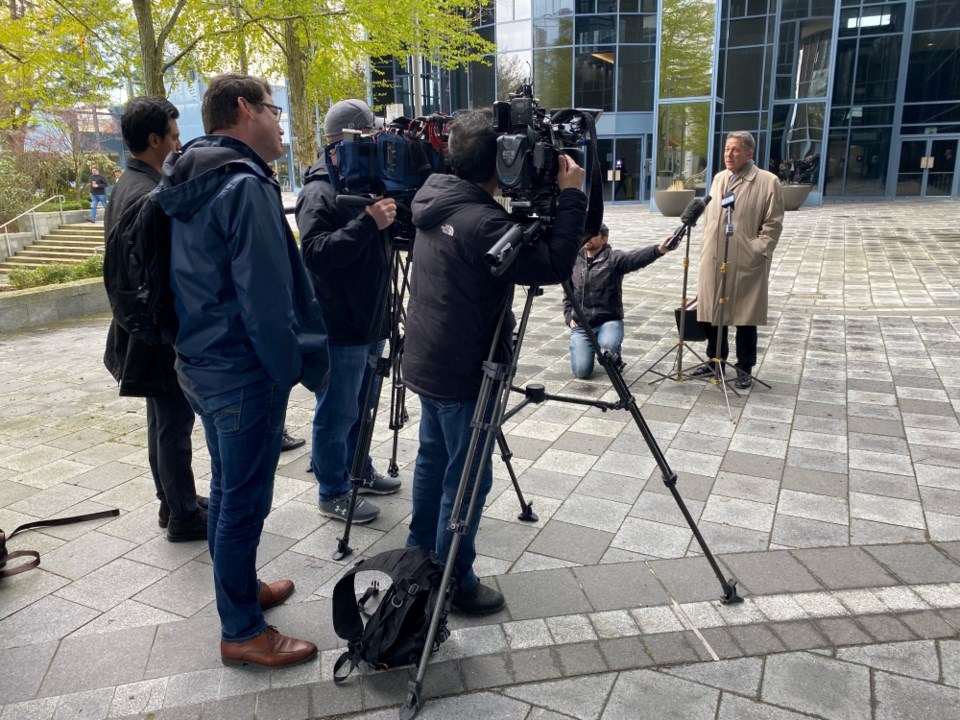For the first time since Myles Gray died in August 2015, a police officer who was at the scene has spoken publicly about that day’s events.
On April 18, the second day of the BC Coroners Service’s inquest into the circumstances around Gray’s death, Const. Hardeep Sahota appeared as a witness.
Sahota is a police constable with the Vancouver Police Department (VPD), a position she’s held since April 2009. Sahota was the first officer to interact with Myles on Aug. 13, 2015. After she approached him, Sahota said Myles became angry and aggressive. Frightened, Sahota returned to her vehicle and called for immediate backup. “I feared for my life,” she testified. Myles then pulled on the driver's side window of her police vehicle.
Recorded radio calls between VPD officers and dispatchers included an officer’s plan to “hobble him first” referring to Gray. In the audio played at the inquest, officers reported two officers were injured, one who had been punched in the jaw with a possible concussion and the other bleeding from the head, and called for multiple ambulances. Then officers radioed that the male was unconscious and not responding, and asked for a sedation request. When Gray regained consciousness, radio calls described him as “still being combative”. Officers made repeated requests for ALS, which Sahota later clarified is part of the ambulance service for advanced life support.
In her testimony, Sahota described Myles’s behaviour as “animalistic” and “barbaric.” While trying to restrain him with several other officers, Sahota said she struck Myles three times in the leg with a baton. She said she did not know who brought or placed the hobble on Myles. A hobble is a tool police use to control a subject’s feet and legs and prevent a person from kicking or standing.
Later, Sahota’s hand was struck by another officer with a baton while she tried to hold Myles down. She left the scene to receive medical attention with Folkestad, another police officer. She testified that Myles was not handcuffed by the time she left.
In response to a question from the coroner, Sahota said the subject would have to be under police’s full control before the subject can receive medical attention. She confirmed a subject would have to not be resisting officer control or posing a threat.
Sahota was also questioned about whether standard practice was followed after the events. She said there was no debrief as it is standard practice that she not discuss the situation with other police officers who were involved. She was assigned a union representative and a lawyer. Though she did not take notes in her notebook, Sahota said she wrote down her account of the incident that night and uploaded her police statement in January 2016.
Witnesses more familiar with the IIO investigation process are scheduled to testify at a later date.
Constables Folkestad, Birzneck and Wong are scheduled to testify on April 19, followed by 10 more constables who will also be witnesses during the inquest.
Witnesses describe confrontation, 911 calls
The second day of the inquest also included the description of Gray’s initial interaction with the residents who called 911.
On April 18, the first four witnesses shared their recollections of the events leading up to the death of the 33-year-old Sechelt businessman. For years, the cause and circumstances of Myles’s death in police custody have been unclear, as the only witnesses to the physical altercation with multiple police officers were the involved officers themselves.
During her testimony on the first day of the inquest, Myles’s younger sister Melissa Gray said she thinks Myles may have been having a mental health crisis on Aug. 13, 2015. He had one episode around 1999, after which he was diagnosed with bipolar disorder. Melissa, who is a registered psychiatric nurse, testified that to her knowledge he was stable after that event.
She said the family is comforted in knowing that Myles was innocent.
Witnesses who saw Myles and called 911 on the day of Aug. 13, 2015, described Myles’s behaviour as erratic and said they believed at the time that he was drunk or high. Muhammed Reza called the police after Myles sprayed his mother with a garden hose and said she was “hot” — which Songul Reza and a neighbour testified they considered to be a sexual connotation. Muhammed told the jury he was young and immature at the time, and did not take mental health into consideration. He also said Myles was unarmed, wearing only shorts and was holding his shoes.
"I felt like he needed to get help," Muhammed said, testifying that he was concerned for the safety of his neighbours and Myles.
Muhammed said he witnessed the initial interaction between Myles and a female officer, but did not see what happened when the officers followed Myles up a hill onto a residential property shrouded from view by plants.
In the recorded 911 call played during the inquest, the operator asked Muhammed if an ambulance was needed for Myles, to which Muhammed said was not sure and would not know.
When nearby resident Harjeevan Bansal testified, he said that Muhammed expressed guilt over calling 911 when he learned Myles was dead at the scene.
After an Independent Investigations Office (IIO) investigation, the BC Prosecutor declined to press charges in the death of Myles Gray, in part because the involved officers were the only witnesses.
The inquest is scheduled to call a total of 41 witnesses between April 17 and 28, after which the jury will share their verdict. An inquest is not a trial, but a fact-finding process. The jury will also determine the classification of death, and share recommendations to prevent deaths in similar circumstances.




